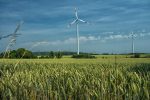
Artificial Intelligence (AI) applications in agriculture have many potential uses. Drones, Smart tractors, and machine learning are just a few examples. In addition, AI can help grade crop quality up to 95% accuracy. It can also learn to annotate data.
Machine learning
Machine learning applications in agriculture can provide farmers with important information about the price of crops, allowing them to make informed decisions. In addition, farmers can use the information to adjust crop production in response to market fluctuations. The algorithms can be trained using crop data, climate, and location information. They can also predict pests and deficiencies in crops.
AI systems can also help farmers determine the best time to sow a crop. Using the latest techniques in soil analysis, farmers can better predict the timing of sowing and crop harvesting. Farmers can also use the data to perform chemical analyses on the soil, get accurate estimates of nutrients needed, and monitor the condition of crops. Combining AI and big data can help farmers make better decisions by eliminating guesswork and improving efficiency.
Drones
AI-equipped drones can capture and analyze data from afar, helping farmers to manage crop diseases and weeds. They can also recommend to farmers the best time to apply pesticides. Although AI itself does not improve yield, it can provide valuable recommendations for farmers to follow.
Smart tractors
AI and machine learning can help farmers make more accurate and efficient decisions. For example, a tractor that can learn its surroundings and what to do next will increase efficiency. As a result, many farmers are looking for ways to incorporate AI into their farming operations. Luckily, some companies have already started taking this technology to the next level.
Some of the first applications of artificial intelligence include smart tractors. These tractors are equipped with a computer vision system that can detect objects that might be dangerous. The system can detect objects based on their size and coordinates. They can then remove them before harvesting. This technology will reduce the amount of money that farmers spend on a tractor and can boost productivity by 30%.
Crop yield prediction
While the benefits of applications of artificial intelligence are numerous, the challenges associated with it are also significant. These challenges include data quality, computing power, and storage requirements. The lack of skilled personnel is another hurdle. However, the potential benefits of AI in agriculture make its use worth exploring. In this article, we’ll look at some of the most common challenges farmers may face in applying AI to their agricultural operations.